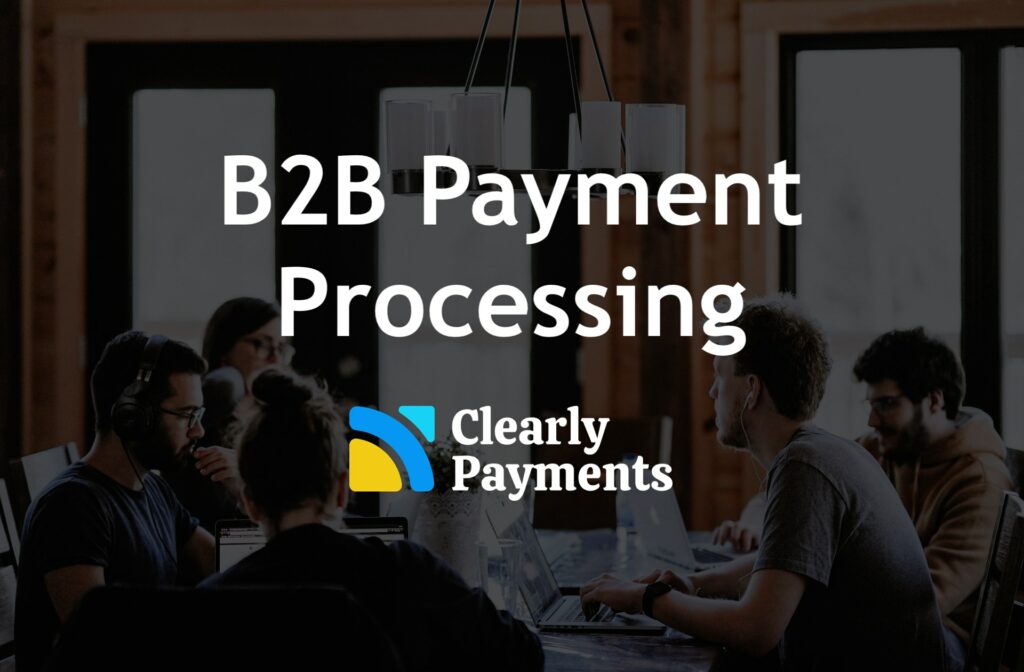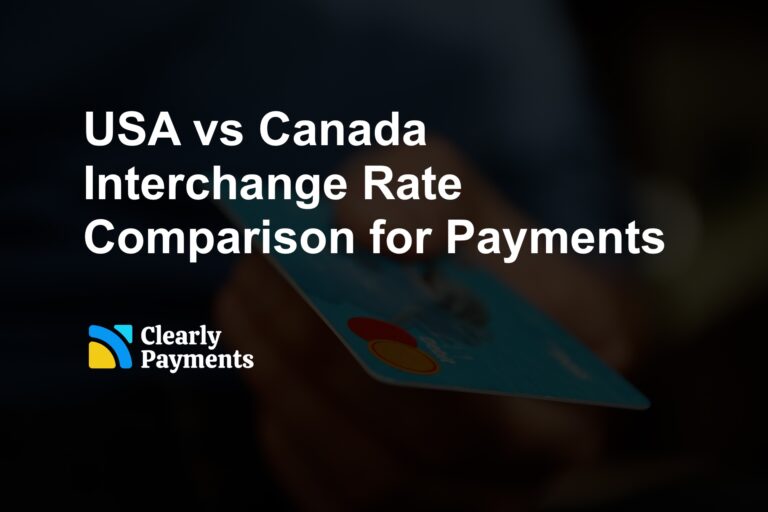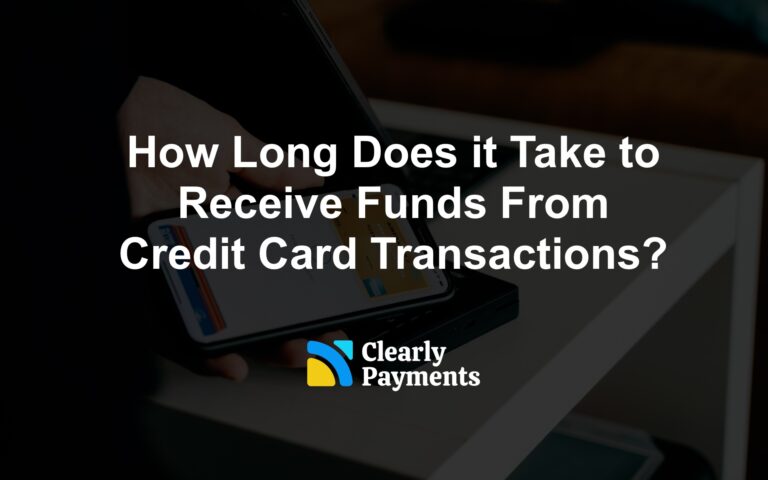The B2B (business to business) payments market globally was valued at over $900 Billion in 2022 and is growing at over 10% per year. It’s a big business. This article covers the definition of B2B payment processing, the difference between B2B payments and consumer payments, and the types of payments in B2B payments.
What is B2B payment processing?
B2B (business-to-business) payment processing refers to the electronic payment methods used for transactions between businesses. Rather than a consumer sending funds to a business for a purchase like in B2C (business-to-consumer), it is a business sending funds to another business for the purchase of supplies, services, inventory, etc.
B2B payments primarily include the use of credit cards, debit cards, ACH (Automated Clearing House) transfers, EFT (Electronic Funds Transfer), and wire transfers. There is not a high growth of B2B payments occurring through cash in today’s world. Overall, the use of cash and checks is declining at a rapid rate. Therefore, we focus on digital payments.
B2B payment processing allows businesses to securely and efficiently make and receive payments. It streamlines the payment process, reducing the time and costs associated with traditional payment methods, such as checks and money orders.
B2B payment processing can also provide businesses with additional features, such as real-time reporting, reconciliation, and fraud protection. These features can help businesses manage their finances more effectively and reduce the risk of fraud and other types of financial losses.
What is the difference between B2B payment processing consumer payment processing?
The main difference between B2B and B2C payment processing is the type of transactions being processed. B2B payment processing involves transactions between businesses for goods and services, while consumer payment processing involves transactions between a business and a consumer for goods and services.
In terms of payment methods, B2B payment processing often involves the use of credit cards, ACH transfers, EFT, wire transfers, and other types of electronic payments. These methods are designed to provide businesses with the ability to make large, recurring payments in a secure and efficient manner.
Consumer payment processing, on the other hand, typically involves the use of credit cards, debit cards, personal checks, and some cash. These methods are designed to be convenient and accessible for consumers, providing them with an easy and secure way to make purchases. In consumer payments, credit card machines and online payments are the majority of payments.
Another difference between B2B and consumer payment processing is the level of security required. B2B transactions typically involve larger amounts of money and are therefore subject to higher levels of fraud protection and security measures. Consumer payment processing, while also secure, may not have the same level of security as B2B payment processing.
What are the types of B2B payments?
B2B (business-to-business) payments refer to the electronic payment methods used for transactions between businesses. There are several types of B2B payments, including:
Credit card payments: B2B transactions can be made using credit cards, just like B2C transactions. This is a convenient and secure way to make payments and can be processed through a merchant account.
EFT (in Canada) or ACH (in USA) transfers: EFT and ACH transfers are electronic bank transfers that allow businesses to make payments directly from their bank accounts. This is a secure and efficient method of making B2B payments, especially for large transactions.
Wire transfers: Wire transfers are a type of electronic payment that allow businesses to send funds directly from one bank account to another. This is a secure method of making B2B payments, but can also be more expensive and take much longer than other methods.
Electronic invoicing: Electronic invoicing is a method of sending and receiving invoices and payments through an electronic platform. This can help streamline the invoicing and payment process for B2B transactions.
Each type of B2B payment method has its own advantages and disadvantages. Businesses may choose to use one or multiple methods depending on their specific needs.
Recurring billing for B2B payments
Recurring billing is another payment processing method in which a business automatically charges a customer on a regular basis for goods or services. This type of billing is commonly used for recurring subscriptions, such as monthly memberships, software licenses, and other recurring services.
In the context of B2B payments, recurring billing can be a valuable tool for businesses that need to process large, recurring payments from other businesses. For example, a software company may use recurring billing to automatically charge its business clients on a monthly basis for software licenses.
Recurring billing for B2B payments can provide several benefits, including:
Increased efficiency: By automating the payment process, recurring billing eliminates the need for businesses to manually process payments and send invoices. This can save time and reduce the risk of payment errors.
Improved cash flow: Recurring billing provides businesses with a predictable source of revenue, which can help improve their cash flow and financial stability.
Better customer experience: Recurring billing provides customers with the convenience of automatic payments, reducing the need for them to manually process payments each time.
Increased security: Recurring billing typically involves the use of secure payment methods, such as credit cards, which can reduce the risk of fraud and other types of financial losses.
The payment processor who provides the merchant account will provide the ability to handle recurring billing on behalf of the business.
Level 3 credit card processing in B2B payments
Level 3 payment processing is a type of credit card processing that is designed for high-value B2B (business-to-business) transactions. It is named “Level 3” because it involves a higher level of data and information than traditional credit card processing.
When a business accepts a Level 3 credit card transaction, it captures and transmits more detailed information about the transaction than a traditional credit card transaction. This information includes data such as item descriptions, quantities, and purchase order numbers, which are necessary for businesses to conduct B2B transactions.
This additional information is used to provide more detailed transaction data to the card issuer and merchant acquirer, which can help reduce the risk of fraud and chargebacks. It also provides useful data for businesses to track and manage their expenses.
Read the full article on level 3 payment processing to get all the details or sign up with Clearly Payments for level 3 credit card processing and B2B payments. Get started now.




